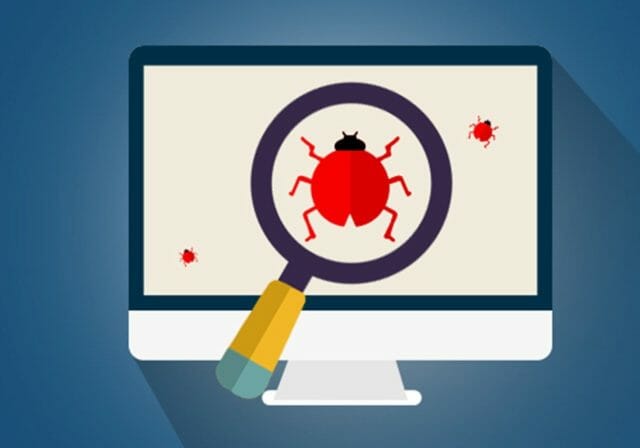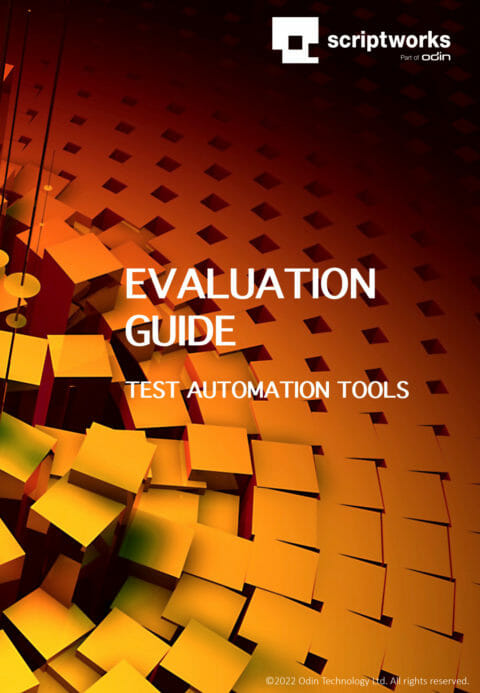
CI/CD pipeline is the heart of every DevOps practice. It means continuously integrating and releasing to production with zero downtime. So, CI/CD combines two words, Continuous Integration & Continuous Delivery, which often refer to automation.
Continuous Integration (CI) is a development strategy that requires developers to commit code to a shared repository many times per day. After that, an automatic build verifies each check-in, allowing teams to catch problems early.
Continuous Delivery (CD) is a DevOps practice for releasing software with better predictability and velocity. Continuous Delivery means that every change, either small or large, can be made available to users at any time through a rapid and automated process that makes it possible to release new versions of software without disrupting operations.
This post attempts to give you an overview of the numerous factors to consider when creating a CI/CD process for your company.

CI/CD Pipeline is a continuous Automated Integration, Continuous Testing, Continuous Delivery, and Deployment process.
CI, at its core, is an automated process that checks your code into a version control system. This process runs automatically when you push new commits to the branch it's watching. It can run on different platforms and in many widely used languages like C++, Java, Python. CI is oriented toward automation and not intended for manual use.
Continuous Delivery (CD) takes (CI)to the next level and reaches its goal: deploying applications quickly and reliably with high quality. The capability of continuous Delivery depends on several factors such as application size, type, number of tests required.

The CD Pipeline has five stages:
1) Continuous Integration (CI) - checking code into the version control system
2) Build Verification Tests (BVT) - tests that verify the build is correct
3) Acceptance Test Automation (ATA) - testing capabilities of UI features in the application
4) Regression Test Automation (RTA) - verifying the application behavior of previously tested components of the application (more on regression testing).
5) Performance Tests - tests that verify performance and scalability

Continuous Delivery is more of an architectural design than a build process. It's responsible for designing features, release cycles, test automation, infrastructure, infrastructure automation, and product analysis. It requires integration into your build process. Continuous Delivery is oriented on automation and not intended for manual use.
Continuous Deployment focuses on the shortest time possible between committing code to version control through unit tests (if required), approval, and Deployment to production. This means that changes are only introduced into the production environment when they have been tested and are considered to be ready for production.
Continuous Deployment follows a build-test-deploy process that happens automatically after completing all phases, without any manual intervention.

A continuous delivery pipeline is a set of related environments through which application code passes from development towards production, or more generally, delivery to the client. It consists of the stages required to go from development to production (or client).
A pipeline can contain any number of stages, including zero stages. Stages are executed sequentially on a dedicated machine inside the stage's container.
The (CD) pipeline is responsible for the software development process and a wide range of tasks such as test automation, infrastructure provisioning, configuration, packaging, etc.

The development teams can use any languages or frameworks they want
All changes have to be committed into the version control system
Build Verification Testing (BVT) is automatically run by CI as often as needed, based on the team's definition of what is "ready to push."
All successful BVT will be pushed into the deployment environment for further testing
Continuous Deployment automatically deploys all changes that have passed through staging into production
The monitoring tool collects data from different stages, and we can view it in a dashboard
All of these different stages and tasks need to be configured via tools.

It has four main responsibilities:
1) Building - verify that the code can be compiled
2) Testing - run tests and make sure they pass
3) Static analysis - check if the source code complies with certain coding rules
4) Dependencies - manage external dependencies
Continuous integration servers, such as Jenkins, provide a dashboard for developers to see whether a build is successful or not, whether the tests are passing, etc.
(CD) pipelines work similarly to Continuous Integration pipelines but are more focused on what needs to happen after code has passed all testing. The only difference is that they need to run additional verification steps for production-ready code before deploying it. These stages and tasks include:
1) Acceptance Testing: All tests and checks necessary to ensure the change is ready for production.
2) Manual Intervention: At this point, a human has to perform some action, such as running final manual QA tests or verifying that the system will meet requirements after Deployment. Once they approve it, it gets automatically released.
3) Release: Here, changes are deployed to production or external systems, and we can see their results in a dashboard.
In this stage, all changes from functional testing are pushed to the staging environment. After a developer or a group of developers finish their chances, they must pass a series of checks and tests before the system is ready for Deployment.
In general, this process includes:
1) Functional testing - making sure all features work as expected
2) Unit testing - ensuring each unit or module works correctly on its own
3) Performance testing - testing the application's performance under real-world conditions
4) Security testing - ensuring that sensitive user data is protected from unauthorized access and all vulnerabilities have been fixed. Two ways of performing security testing are a) Manual b) Automated
5) User Acceptance Testing (UAT): All tests and checks necessary to make sure the change is ready for production
6) Quality Assurance (QA): Ensuring all changes meet certain quality standards of high-quality software.
7) Deployment: Deploying the project to a test environment with real user data and making sure it's working correctly in this environment before deploying to production.
However, for the CD process to begin, there needs to be some sort of verification that all tests pass before deployments can take place. Continuous Integration (CI) is one way of verifying that your code meets quality standards. CI involves setting up a process through the IDE (Integrated Development Environment) in which all code is run automatically when something has been checked in.
When implementing the CI/CD pipeline, be aware of the following pitfalls:
A pitfall that many organizations fall into is creating a bottleneck in the CI/CD pipeline process. The key function of your pipeline is to make sure all code passes tests, and no one slips through the cracks by checking in code without it passing any tests. However, if developers are waiting for other developers working on the same branch to finish before their code is deployed, your pipeline will not be effective.
It would help if you wrote tests for other people's code to pass CI testing before being checked in and deployed. This creates a bottleneck at the first step of CI, where all developers are checking in code. If no one waits for other people to finish, then your pipeline will be faster and more efficient.
Another pitfall that organizations fall into is not properly scaling their CI/CD system. If you are implementing CI/CD for the first time, you might want to consider doing a smaller implementation with one or two tasks to test it out before expanding it to include all tasks.
If you are doing a larger implementation, ensure that your resources are correctly scaled to handle the CI/CD process. You will not want too many build agents or test agents because that is just another bottleneck in the pipeline and might cause development teams to wait longer for their code changes to pass testing before being able to deploy.
The two models are used to achieve the same goal, but their biggest difference is how they achieve it. (CD) focuses more on verifying that your code can be deployed to hot staging servers before deploying it to production.
Continuous Deployment focuses on the idea of always deploying your code whenever there is a successful check-in so you can stay as close to the code as possible.
For most production environments, (CD) is more sustainable than continuous Deployment because of the overhead for developers and management involved with checking in their source code repository.
However, the CD is a good practice for new development teams where everyone knows what they are doing, and there are no longer any handoffs between development and operations. This ensures high software quality and hence a smooth running of operations teams.
The biggest benefit of the CI/CD pipeline is that it makes your software delivery process more predictable by giving you visibility into what's being checked in, unit tests being run, and deployments taking place. Achieving both a consistent and automated way.
This transparency lets everyone know what is going on with the code, so no delays or problems are deploying to production. It also gives you a method to verify your code before it gets pushed to production.
The second benefit of the CI/CD pipeline is that it gives development teams a chance to test their code before deploying it into production. The more developers you have, the greater the chances are that someone will check in code that fails QA testing or doesn't work correctly, so the CI/CD pipeline gives you a chance to prevent code from being deployed to production due to an error that should have been caught.
There are various CI/CD tools that you can use to automate deployments and testing, but there is no one correct tool or set of tools.
The best way to determine what works for your team is by trying out different options and seeing which has the most benefits. GitLab, on the other hand, has an extension that provides developers complete control over their code and is the best in class for CI/CD pipelines.
GitLab's CI/CD is built into the platform that makes it easy for developers to have full control over their code through a web interface without learning new tools. As a result, there are no obstacles to integrating CI/CD into their process.
GitLab also has its own CI/CD tool called Pipelines that lets you run tasks in pipelines which makes the overall testing process faster and more efficient. This is beneficial because developers can check in code it processes through GitLab's static code analysis.
If you're not familiar with the CI-CD pipeline, it's a workflow that allows teams to develop and deploy new features faster. It works by breaking down development into two stages:(CI) and (CD). The CI stage is where developers work on code changes in small batches to be tested quickly.
All of this testing takes place before any code moves onto the next phase of the process, which is called (CD). This last step has been shortened to "delivery" for most people because it entails putting all completed features together at once and getting them ready for production release. If your team isn't using CI/CD yet, there are plenty of benefits waiting when you do!
Automated testing - we have an article here that fits well with the topic of CI/CD Pipeline.
If you want to find out more about using a CI/CD pipeline in your business, get in touch.
